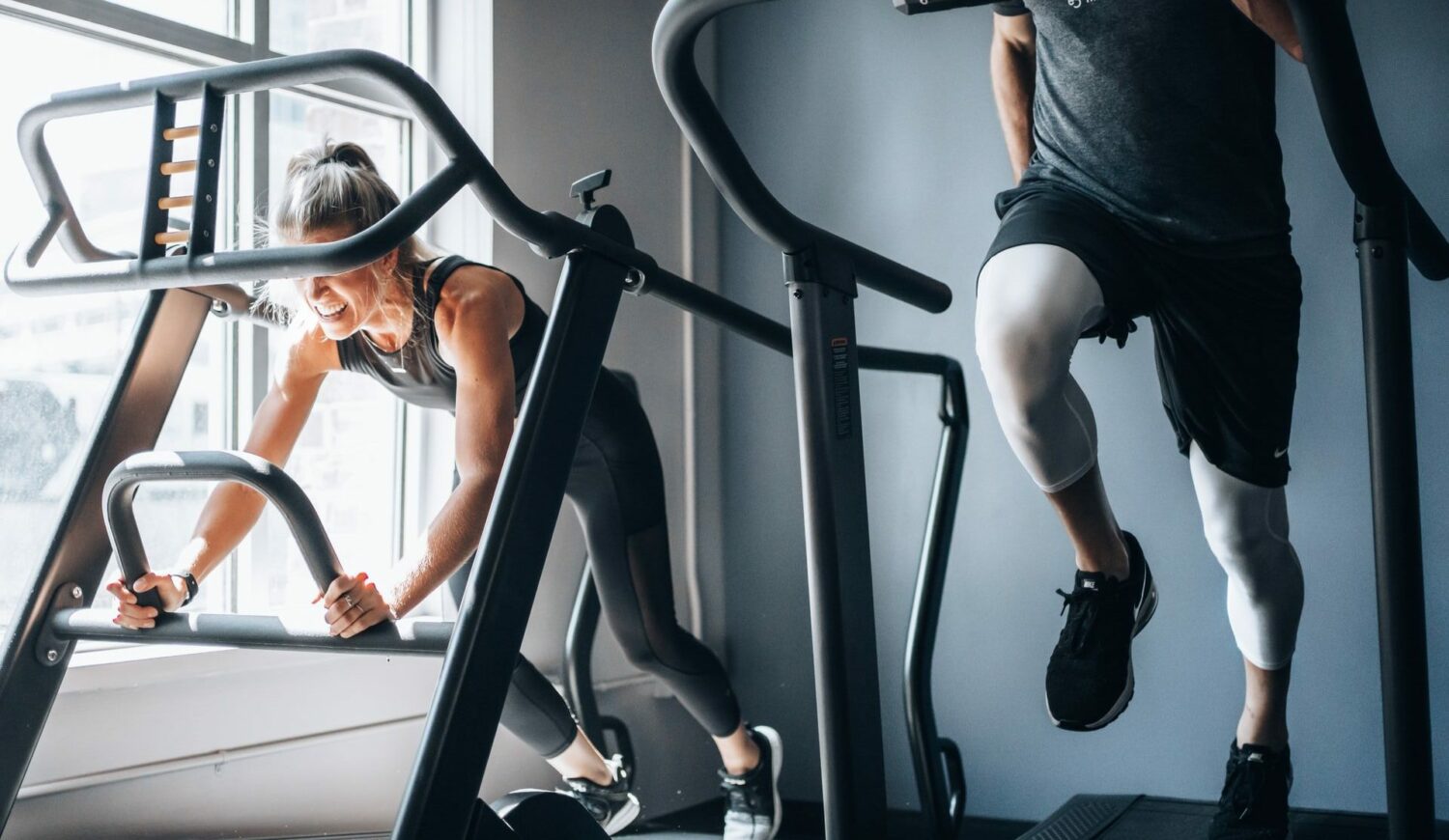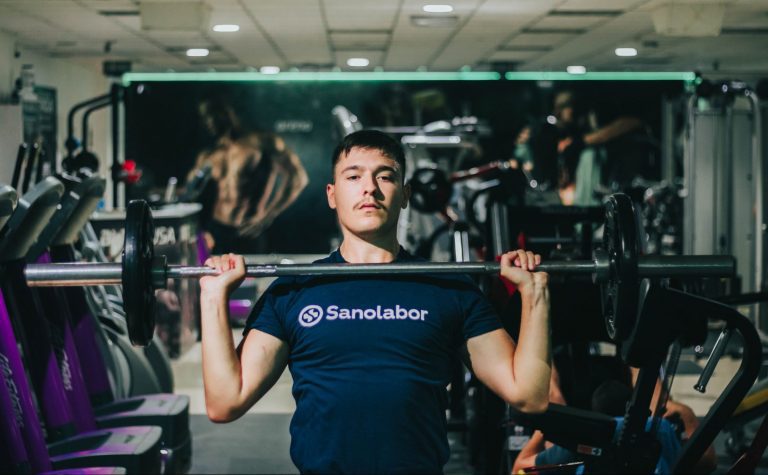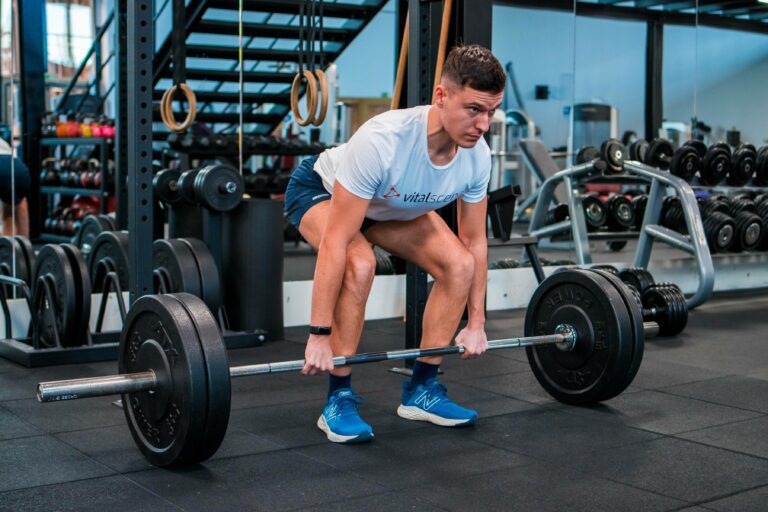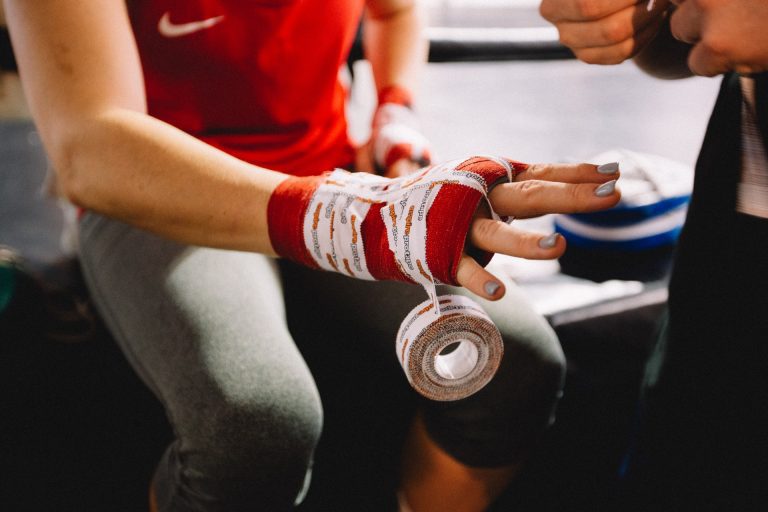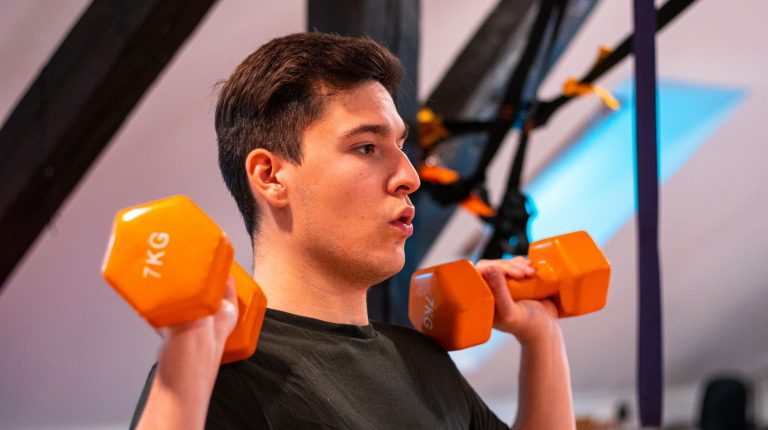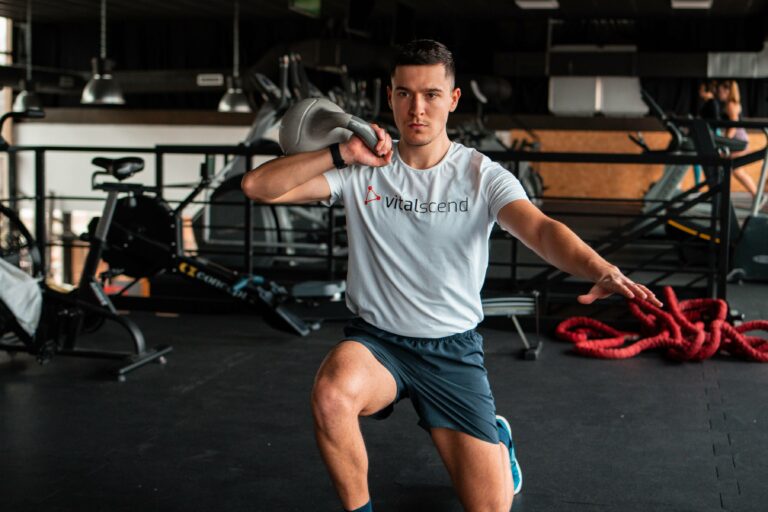Strength Training Effect: Boost Energy and Reduce Fatigue
If you are wondering why are active people so energetic, we’ll look at strength training effect on metabolism and energy production, to clear things out.
Through an optimized diet, improved sleep, and structured training, we can reduce fatigue and increase energy levels in our bodies. But how much resistance training is beneficial, and how can we get the most out of it? There is a strong correlation between physical activity, improved energy, and reduced fatigue.
The Basics of Energy Creation
Humans, like all the other species, need to produce energy to sustain life. In order for us to perform the basic tasks and needs of one’s biological body, we need energy. But how do we get some?
Our bodies are wired so well that we already are programmed for energy production. All we need is water, calories, and oxygen.
See, when performing any exercise, our blood distribution increases in the muscle, and reduces in the other organs, except the most important ones like the lungs, brain, and heart which must keep working at a high level to sustain the activity.
When we lift weights, run or do any kind of challenging physical exercise, our heart pumps faster and stronger, blood circulation is improved which by itself increases oxygen transfer throughout the body.
key point
All the pressure your muscles, tendons, ligaments, and bones have undergone stimulates new bone cell and muscle cell growth and adaptation, after which they grow bigger and stronger, meaning they can both store and produce more energy for the next session. Your lungs become more efficient and using oxygen, mitochondria generate more energy, etc.
ATP and Three Types of Energy
We get energy from a source known as ATP, adenosine triphosphate which is chemical energy our cells can use. Movement or force produced by muscles is mechanical energy transferred from this ATP chemical one, which is broken down to ADP to release energy.
There are different types of energy, but mainly these types affect total human energy.
Physiological Energy
Psychological Energy
Kundalini Energy
This one is best explained through nutrition, oxygen, and water. Basically what you produce is what you eat, and being chronically low on calories and nutrients will cause energy loss in the long term. Eating nutrient-dense foods and enough calories will make sure you have enough of this type of energy.
Psychological energy is related to your brain and motivation. In fact, if you are motivated, live with a purpose and have specific goals, you can create more energy that comes from endorphins like dopamine and serotonin, which are brain chemicals or hormones.
Spiritual energy – Is the energy that can be drawn from the cosmos, is the energy we usually refer to as the life-force or chi-energy that flows through our chakras. Removing blockages, whether through tai chi, acupuncture, meditation, or breathwork & qi-gong, we can increase our energy by allowing better energy flow.
What is Fatigue and why does it show up?
Fatigue is a sense or state of tiredness, low energy, and sleepiness. It is defined as a lack of energy in which dizziness, aching muscles, and tiredness are best friends.
Three types of fatigue exist transient, cumulative, and circadian.
- Transient comes after extreme sleep restriction
- Cumulative is like chronic that is caused by repeatedly bad habits
- Circadian is low performance in night hours
Reducing fatigue is one way of increasing accessible energy and people who have this chronic tiredness may need to check out their lifestyle & habits.
Factors that can affect fatigue:
| Low-quality sleep | or loss of sleep can increase brain inflammation and overall body regeneration |
| Lack of Exercise | will not give your muscles a need to produce more energy to move, metabolism will slow down |
| Mental conditions | such as anxiety, depression, boredom, mood swings, and emotional stress can make you burn out your mental energy |
| Health conditions | such as cancer, patients who undergo chemotherapy, or patients with multiple sclerosis might be more prone to chronic fatigue |

Why are Active People More Energetic?
Ever wonder why active people are so energetic? They get motivated very quickly, they are better action-takers, and they are more confident and ready on the go. Or you have seen athletes your age being tired all the time?
The reason behind these two different situations are factors like the type of training, optimized nutrition, quality of sleep, hormonal environment, and hydration. Improved blood flow during (after) workout increases oxygen, water, and nutrient transport. The three basic ingredients for energy creation.
In general, people who work out consistently are more energized and less fatigued and while it seems they should be tired from the sport, this isn’t entirely true. Have you ever thrown a quick workout session (not an exhausting one) in between your tight schedule?
Active vs Athlete
An Active person is one that exercises consistently, getting around 2,5-5 hours of physical activity (aerobic or anaerobic) on a weekly basis. World Health Organization (WHO) recommends that adults aged 18-64 should do 150-300 minutes of moderate-intensity aerobic activity of at least 75-150 minutes of vigorous activity throughout the week.
Athletes have a professional training regime, nutrition protocol, and specific goals in mind. Usually, athletes have at least one training a day, whether it is strength, conditioning, skill-specific, or team-strategic. It’s usually fatigue that occurs in overtrained athletes with under-optimized diet, sleep, and recovery.
Physical activity, when properly structured can be a great tool for increasing energy. It can stimulate the main hormones related to energy production, acting through both blood-enhancing mechanisms as well as improved energy-production mechanisms related to more efficient fuel usage (food-to-energy) conversion.
Catabolic-Anabolic State Ratio
The principle of the catabolic-anabolic state is how our biology works. We must deteriorate the muscle (producing high energy while doing so) and then eat and sleep to allow the muscle to grow, which is the anabolic state. To optimize this process, we must include both sides, the catabolic and anabolic ones. If we are sitting, sleeping, and eating all day, we will not feel more energized and there is an important reason why shared down below in the bonus tips.
Potential benefits of Resistance training on Boosting Energy
Since we already know about the potential effects of aerobic low-impact training on cardiovascular health, vitality, and energy production, it is time to see what the science says about strength training in terms of energy expenditure, quality of life, and overall vitality.
- If you’re interested in other benefits, here’s an in-depth review of the 20 Benefits of Strength Training On Health And Fitness.
May Increase Energy Expenditure
Energy expenditure is the amount of energy that we use to support the basic functions of our body. During exercise, this energy is increased because we are performing an extra activity.
Alongside acutely improved EE, training seems to offer increased EPOC or Excess post-exercise oxygen consumption which allows us to burn more calories afterward.
It turns out that higher intensity and higher volume of weight training were shown superior to low-intensity and low volume in improving energy expenditure. (1)
Another great study screened elderly adults (61-77yrs) for 26 weeks, for the effects of resistance training on energy. What’s great about this study is they measured:
- REE – Resting Energy Expenditure
- AEE – Activity-Related Energy Expenditure
- TEE – Total Free-Living Energy Expenditure
- ARTE – Activity Related Time Equivalent
Resistance training led to a significant increase in strength and fat-free mass, but also significant increases in AEE by 30%, REE by 6.8%, TEE by 12%, and ARTE by 38%. (2)
On top of that, a very short burst of resistance training, a session lasting 11 minutes was shown to chronically elevate energy expenditure in the overweight college-age population. (3)
May Improve Circulation & Blood Flow
Exercise increases oxygen consumption and transfer. A more passive approach is meditation and breathing exercises which can bring fresh oxygen to the brain.
Comparing the effects of high-intensity resistance exercise vs low-intensity resistance exercise circuit it was shown that High-intensity exercise stimulated higher production of Nitric Oxide, a molecule that increases blood vessel diameter, improving blood flow. (4)
Both resistance training and aerobic training have been shown to reduce blood pressure. Aerobic training reduced arterial stiffness, while resistance exercise led to an increase. Resistance training was superior to aerobic, in generating vasodilatory effects, meaning it improved blood flow. (5)
May Increase Energy-Production Related Hormones
When we are working out, we enter the catabolic state. The catabolic state has to do with molecule breakdown, it increases the secretion of adrenaline and noradrenaline. These hormones improve endurance, force output, and glucose uptake.
Resistance training has a significant impact on our hormonal environment and hormone concentration. Anabolic hormones like HGH and Testosterone which help with muscular growth and adaptation are also very important for creating a stronger body that can produce more energy during activity.
High-volume and high-intensity training is far superior to low-impact or low-intensity training for initiating hormonal changes, both anabolic and catabolic. (6) Of course, you need a high protein diet and optimal recovery for the adaptation to occur.
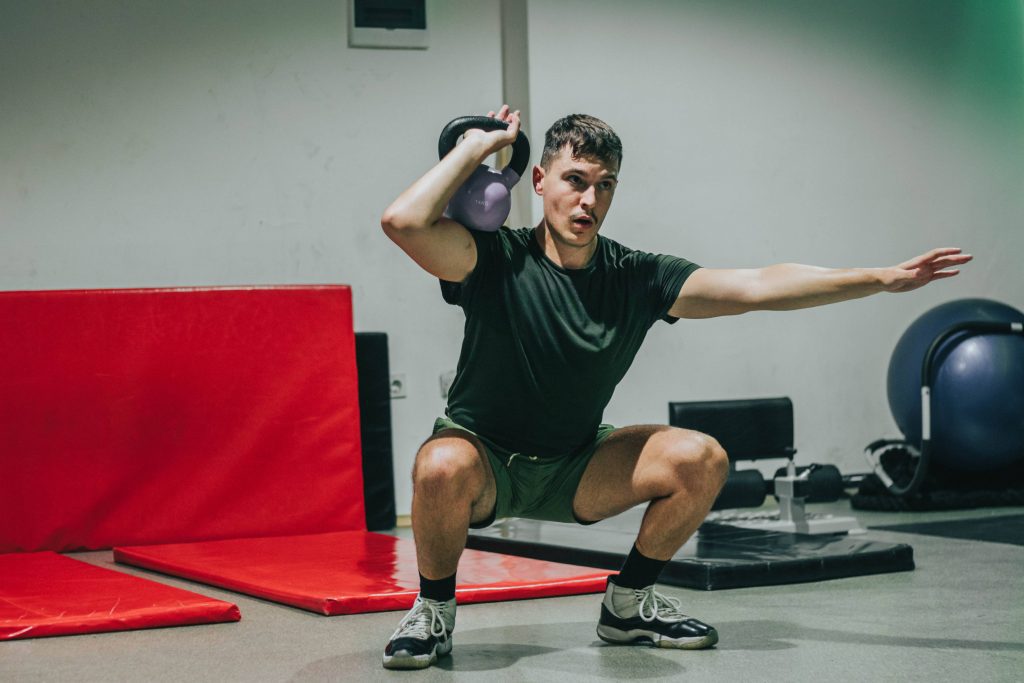
Potential benefits of Resistance training on Reducing Fatigue
When it comes to fatigue, there are several factors with which resistance training can help. As the state of tiredness, loss of energy, and desire, fatigue is a very unpleasant feeling for our bodies, especially chronic fatigue.
If we are able to increase our energy, simultaneously we should be able to reduce our fatigue, because they don’t go together. Resistance training can affect factors like inflammation, cytokine production, and an anabolic-catabolic state which may be highly beneficial for reducing fatigue and improving well-being overall.
May Reduce Chronic Inflammation
Our bodies will constantly experience acute bursts of inflammation. Through processing our food, tearing the muscle down in the gym, or trying to memorize hard information, cytokines and other inflammatory markers will show up.
Training will acutely increase inflammation, which is the primal trigger for adaptation. After proper recovery, we’re more efficient in fighting inflammation.
- Inflammation is measured by the levels of CPR or C-reactive protein, inflammatory cytokines, and IL-6.
- Resistance training has the potential to reduce low-grade inflammation (7)
- High intensity and high volume training cause a higher increase in acute inflammation, resulting in DOMS and fatigue, which stimulates better adaptation. (8)
Another great effect is fat loss, metabolism boost, and muscle gains. Strength training, by improving those, can improve metabolic factors that are related to chronic inflammation.
May Reduce Muscular Time-To-Fatigue
The relation between fatigue and exercise only comes when we are either overworking (overstimulated) without sufficient regeneration time (sleep and diet) or we are way too passive and our bodies haven’t tapped into the energy-boosting effects of the workout.
- 8 weeks of resistance training improved 1-RM strength, fatigue resistance, and total reps in both women and men. (9)
- Hypertrophy improved time and fatigue resistance. Strength gains were in favor of the men, while fatigue resistance was sex-independent. (10)
- resistance training in workers was beneficial in improving time to fatigue, muscle strength, wrist pain, and self-rated health. (11)
What are the potential benefits of strength training?
Strength training comes with a myriad of potential health benefits which include: increased strength, muscle growth, fat-loss, improved body composition, mood and energy boost, increase in libido and bone mineral density (BMD), reduced fatigue and faster metabolism.
How to train for strength?
The best type of training for strength is heavy and compound weightlifting, with low overall volume, heavy loads and longer rest periods. The optimal training metrics are: 2-3 workouts per week, 3-5 exercise per workout, 3-5 sets and 3-5 reps with heavier loads of + 80% RM, incorporating compound lifts mainly.
What is the best strength training to do without equipment?
To build strength with no equipment, it is worth looking into calisthenics and bodyweight training methods. The key to building muscle is to activate our muscles to produce force against external resistance. However, it is worth noting that for maximal strength gain, in a sense of maximal power output (pure strength) we probably won’t get far with neither one, as it is best to lift weights. In terms of general strength, building muscle and shredding fat, these two methods can be pretty effective.
What is a good strength training workout for a beginner?
Beginners should learn proper posture and start with lighter weights at first. Generally, learning the basic compound movements such as squats, dips, pull-ups, bench press, deadlift, overhead press, etc., is a great start. For absolute beginners who haven’t lifted any weights before, training focused on strength is a no-no. They rather focus on proper posture, mobility and lift lighter weights (60% RM) aiming at hypertrophy first. After a good balance is established, posture is correct, muscles and connective tissues are stronger, next step is translating to strength.
How does strength training improve body composition?
Strength training improves body composition in many ways. First it aids in muscle growth and regeneration, which stimulates anabolic hormones. As we gain muscle, our bodies are at a more efficient ratio of muscle-to-fat in terms of calorie burning. Theoretically this speeds up our metabolism, because of the increase in muscle which is metabolically active tissue (needs/burns calories at rest). Another way is by reducing or burning fat tissue, which comes as a side effect of training.
Key Points
- There are three types of energy: physiological, psychological, and spiritual energy. Human, biological energy is the metabolic or physiological energy we get from ATP.
- The top three most important key elements for energy production are calories, oxygen, and water.
- Resistance training was shown to increase energy expenditure, both total, free-living, and activity energy expenditure
- Strength training can also fight fatigue by making us more resistant to it, by reducing low-grade inflammation, and by supporting energy-related hormone secretion.
- The energy-fatigue ratio is the catabolic-anabolic state, it’s natural to be tired sometimes after performing activities, but it’s essential to perform activities to release more energy and adapt.
Bonus Tips: 4 Energy-Boosting & Fatigue-Fighting Tips
As we’ve learned so far that resistance training is great for energy, what are the other ways to support these energy-producing and fatigue-fighting benefits?
Optimize your Sleep
Stable Caloric Intake
Zinc & Vitamin D
Supplement with Eleuthero
Sleep is the natural regeneration process of our body, and to boost energy we need the anabolic state too. This is where we build bigger molecules from smaller ones that we can then use to exercise or perform any other activity.
Since even a one-week sleep restriction of 5 hours per night has led to a reduction in testosterone levels by 10-15% in young healthy men, optimizing your sleep might be a good way to restore or even boost natural testosterone levels. (12)
The intake of calories vs the ones you burn should be stable, or 300kcal caloric deficit to lose weight, or 300kcal caloric surplus to gain muscle. But going over this range, eating way too much or way too little can affect the speed of our metabolism and increase fatigue.
Eating way too much is constantly putting our bodies in a rest and digest state which results in fat gain if we don’t burn those calories while eating too little can also slow down are metabolism and hinder energy production
Whether that’s eating more fish, dairy products, nuts, and poultry or getting more sun, or supplementing with it, increasing the levels of zinc and vitamin D, especially in those who are deficient can significantly impact testosterone levels. (13)
As we’ve seen, by increasing HGH and Testosterone we can further speed up our regeneration process, making it easier for the body to adapt, create a stronger and more resilient body that can fight off inflammation, and produce more energy.
Eleuthero is one of the most potent fatigue-fighting herbs on the planet. This plant acts as a brain tonic, energizing our body through kidney, spleen, and heart nourishment. Know as one of the best brain tonics, this plant can improve oxygenation to the brain, improve adrenal fatigue, and release or restore energy while providing us with sustainable non-jittery energy throughout our day. The best way to take it is in tincture, or extract form.
One study found that eleuthero can extend swimming to exhaustion time in mice, acting on decreasing physical fatigue by accelerating energy changes through improving B-oxidation in skeletal muscle. (14) Anti-fatigue properties of Eleuthero were found to be helpful in preventing physical fatigue while improving recovery time. One of the possible mechanisms that protect muscle tissue and delay exhaustion is reducing the accumulation of lactic acid in the muscle. (15)
Research Limitations
*Studies have some limitations, important to evaluate the validity of their results. Here’s a highlight of some and NOT ALL studies (and limitation), shown in this article, for context.
- Aged data or data older than 10 years *1996, 2000, 2004, 2005, 2007, 2008, 2010.
- Small sample size and specific population * (n)8 older men (n)22 sedentary, overweight, young adults, (n)20 untrained men, (n)30 hypertensive adults.
- Lack of (or non-exercising) control group may make data interpretation harder and reduce the validity of results.
- Eleuthero’s effect is studied on animals *administrated to ICR mice.
- Study which is missing the data on fatigue test *reduced statistical significance for between-group differences.
- Study which did not obtain no muscle biopsy to asses muscular adaptation.
- Further research needed to asses differences between gender and specific effects of RT on inflammation.
- Weak control of external factors like overtraining, nutrition, circadian patterns, hormone secretion etc.
Frequently Asked Questions
How can I have higher and longer-lasting energy?
While supplements like caffeine or addictive nootropics may stimulate your brain acutely, long-term high energy levels are never a side effect of supplements and an unhealthy lifestyle. For long-lasting high-energy effects, you should opt to improve the quality of your sleep, get enough minerals in your diet, eat a sufficient amount of calories, practice deep breathing, play out in the sun and live an active lifestyle.
What are the best supplements to increase energy?
While addictive supplements like caffeine or nootropic drugs may acutely raise energy levels, to balance out and optimize our energy it is better to look up at alternatives like B-vitamins (enhances food to fuel conversion), Rhodiola Rosea (reduces stress and fatigue), Creatine (increases muscle performance), Beetroot Juice (enhances blood flow, increases NO) and Vitamin D (supports Testosterone levels).
Can I increase my energy levels with exercise, and how?
Exercise mainly acts by acutely releasing more catabolic-hormones like epinephrine and norepinephrine which stimulate energy breakdown in your body. Aside from this, in the long term, it makes you more resistant to fatigue, reduces low-grade chronic inflammation, and increases Testosterone, all of which can act to boost energy and fight fatigue.
Why are active people more energetic?
In general, active people have higher secretion of endorphins or feel-good chemicals which can boost mood, along with energy. They can transfer oxygen more efficiently, which plays a major role In energy creation. They also have a better metabolic, physiological, and hormonal environment for energy creation.

